Best mobile data collection apps
There was a time when collecting data on the go involved a lot of preparation, manual tasks, and sprints to places with a stable internet connection when you were in a pinch.
But the rapid growth of remote work and improved internet accessibility has changed that. Smartphones now play a more important role in our work lives than ever, especially when it comes to collecting data. Whether you’re collecting client information, parent contact details for a school, or something else, smartphones can be powerful data-collection tools.
Software companies also continually release new apps that give mobile phones the same — if not greater — capabilities as traditional computers. That means remote workers can access the same products, features, and services, regardless of whether they’re working in an office or conducting fieldwork.
Offline features in mobile apps have even made it easy for people to access, view, collect, and share information anywhere, even if they can’t access the internet.
With so many app options out there, how do you decide which one to use? We’ll take a look at 10 great apps to help you find one that’s right for you.
But first, let’s define what a data-collection app is.
An overview of what data-collection apps do
A data-collection app is a mobile application designed to collect and store qualitative and quantitative data. In many cases, these apps can also analyze and derive insights from the data.
Instead of being tied to a desktop or laptop (or worse, a clipboard and a pen), people can collect a variety of data while on the go — in their cars, in the field, on the street, and while meeting with others.
Data-collection apps are a necessity for some professionals, such as site workers, field service workers, drivers, public safety workers, humanitarian aid workers, and healthcare workers, to name a few. They’re also useful in school settings, for example, when students need to take quizzes or tests on a tablet or phone or when teachers or administrators ask parents to fill out forms for their kids. There’s no shortage of uses for these applications.
We’ve gathered the leading options for you to review in this article.
1. Jotform
Jotform is a powerful online form builder that offers two tools that are valuable mobile data-collection options.
The Jotform Mobile Forms app allows users to build, view, fill out, and share forms from their mobile devices, as well as organize and analyze form data. This eliminates the need to use several siloed solutions in order to gather information, share it, and get work done.
With the mobile app, you can add form fields that let people provide their geolocation information, record a voice message, and add their e-signature as they fill out a form. With this information, Jotform users can not only collect more specific data but also make decisions on the fly.
The app also has an offline feature that allows users to collect the information they need when there’s limited or no connection to the internet. All the information collected offline is saved and synced to a Jotform user’s account once a stable Wi-Fi or wireless data connection is available. That means Jotform users can stop searching for a Wi-Fi connection and worrying about losing data that’s submitted when there’s no internet available.
The handy kiosk mode in the Jotform Mobile Forms app allows app users to turn their mobile device into a public survey station. Kiosk mode pulls up a form, locks it in full screen so no other applications are visible, and refreshes a form after each submission. This creates an uninterrupted experience so different people can fill out the same form at trade shows or conventions, for instance.
Jotform users can even assign forms to team members who don’t have an account but need to access a form securely, fill it out, open it in kiosk mode, or manage their submitted information.
After you provide a teammate’s name and email address, Jotform will send that person an email with instructions to access the form. You can receive notifications about incoming submissions, view the data, and act quickly on the information you receive.
Jotform Mobile Forms also makes it easy for users to share forms or individual submissions. They can send forms via text message, in an email, and through social media channels such as WhatsApp, Facebook, and X.
Jotform also offers a no-code app builder that you can use to create custom apps. With Jotform Apps, you can drag and drop forms and elements into an app, then customize the app with your branding. With more than 300 premade templates, the platform saves you time and requires no coding knowledge to build.
Once you’ve set up your app, you can share it via link, email, or QR code. You can also download the apps to any device and access them at any time. They work on any smartphone, tablet, or desktop computer, so it’s easy to implement apps across an entire workspace or organization.
The ability to build custom apps opens up nearly endless possibilities when it comes to mobile data collection. You can bundle multiple forms into a mobile app, using them to gather data like tradeshow attendee contact information, business visitor data, and more. Healthcare organizations have used Jotform Apps to collect patient information and streamline patient care, and retail businesses can use apps to collect customer information and orders.
Jotform users with a free Starter plan can create up to five forms with an unlimited number of questions and receive up to 100 submissions each month. They also get up to 100 MB of space for uploaded files and can store up to 500 submissions in their account at any given time. For more storage space and higher limits on the number of submissions and forms, users can upgrade their plan.
Cost: Free with all Jotform plans, including the free Starter plan
Available on: Google Play and App Store
Best features:
- Hundreds of premade templates for apps and forms
- No coding required
- Endless customization options with a drag-and-drop editor
- Offline form capability
2. Smartsheet
Smartsheet counts more than 90 percent of Fortune 100 companies as users and posts case studies about users who increased productivity by 40 percent and operational efficiency by 50 percent by using its product.
The broad suite of features includes data visualization tools, centralized work portals, dashboard reports, work tracking boards, and automated request or approval workflows.
Smartsheet also has a mobile app, available in eight languages, that allows registered users and team members to collaborate by accessing, viewing, editing, or updating sheets from their mobile device. Users can also sort information, respond to update requests, view project timelines, make approval decisions, and pull up reports on key metrics that are updated in real time.
The mobile app allows users and licensed collaborators to access and fill out a form attached to a sheet. Form responders can even scan a barcode, share location information, or upload files, including photos taken from their mobile device. Once a form is submitted, this information is used to populate rows in an associated sheet.
According to Smartsheet, collecting data with forms is particularly helpful for employees, such as field inspectors, who travel or work from a number of sites and need to access information.
A paid subscription is required to use Smartsheet’s features and its mobile app after a 30-day free trial period.
Cost: Paid subscriptions start at $12 per month required after 30-day free trial.
Availability: Google Play and App Store
Best features:
- Data-visualization tools
- Automated workflows
- No-code platform
- Multilingual user interface
3. Device Magic
Device Magic helps workers collect and share information on the go.
To get started, Device Magic users build forms on their laptops or desktops. A drag-and-drop tool allows them to select questions from a toolbar, place them on a blank workspace, and rearrange the order of questions.
Team members added to a company’s Device Magic account can access forms through the app on their mobile devices. Permissions settings give users the flexibility to determine which devices or fellow users can access a form. Users can add devices to a Device Magic account by sending a text or email invitation to new team members.
Device Magic also has offline capabilities, so users don’t need an internet connection to access, fill out, and submit forms through the app. In these cases, submitted form information is saved on a mobile device and transmitted once an internet connection has been reestablished.
There are several advanced form fields, or questions, that allow team members to collect an electronic signature, scan a barcode, attach files, include a photo, and submit annotations to an uploaded image.
Enterprise users can even use Device Magic’s Dispatch feature to have designated team members complete forms with prepopulated information or send a completed form to specific people once it has been submitted.This workflow can come in handy when remote workers need to share important information — such as job quotes, invoices, purchase orders, or inspection reports — and quickly get approval from managers.
There are no limits on the number of forms users with free accounts can create or the number of submissions they can receive. However, they can only connect one device per account, which means that they cannot assign or share forms across devices until they upgrade to a paid plan.
Cost: Plans start at $69 per user per month.
Available in: Google Play and App Store
Best features:
- Easy-to-use drag-and-drop form builder
- Offline form capabilities
- Forms with pre-populated data
- Comprehensive permissions settings
4. Zoho Forms
With Zoho Forms, registered users can build customizable forms, collect a broad range of information across devices, and manage where that data goes and how it’s used.
That same range of functionality extends to the Zoho Forms app, which allows registered users to build forms from scratch or get a jumpstart on the process by using dozens of templates. Themes used to design a form, however, don’t appear in the app, and users must have a paid plan to customize the design of their form.
The form builder offers a wide range of form fields and many types of questions, so users have more control over what data they collect and how they ask for that information. The electronic signature field, for example, allows people to sign a form on any device with a finger, stylus, trackpad, or mouse.
Users can also modify the properties of individual questions, so they can determine how information is gathered and how questions will appear on a form.
For instance, users can enable form respondents to scan barcodes, QR codes, and business cards with the camera on their mobile device. That data is then used to fill in specific information on a form, such as names, addresses, email addresses, phone numbers, product tags, or offer codes.
As another example, activating the app’s geolocation feature for a specific form allows users to determine where someone filled out and submitted information.
The Zoho Forms app allows users to publish their form on a website, share it on social media, or distribute it as a QR code or public URL. Users can also share forms, as well as any submitted form information, as tasks with other coworkers in the Zoho Forms account.
The kiosk mode feature allows a form to be displayed in full-screen view within the Zoho Forms app. Multiple people can fill out a form on the mobile device but can’t access other parts of the app, such as submitted information or other forms. Users just set a passcode to ensure form respondents don’t gain full access to the app, and then use that passcode to close kiosk mode.
The app allows users to append comments to forms for additional follow-up or background information.
The Zoho Forms app also works offline, so users don’t need an internet connection to build forms, fill them out, and submit information. The data is saved and will be transmitted or uploaded once a mobile device is reconnected to the internet.
Cost: Users with free plans can create up to three forms, receive up to 500 submissions a month, upload up to 200 MB of files, and collect up to 10 payments through their forms using Zoho’s integrations with payment processors, including Stripe and PayPal. With a Basic plan, at $10 per month, users may receive up to 10,000 submissions each month and store up to 500 MB of files. Zoho forms has three additional tiers of paid plans with increasingly higher limits on forms, submissions, and storage.
Available on: Google Play and App Store
Best features:
- Wide range of form fields and question types
- Offline form capabilities
- Integration with tools like Salesforce and Microsoft Teams with all plans
- Generation of PDFs for form submissions
5. Fulcrum
Cost: Paid subscription required after free 14-day trial
Availability: Google Play store and App Store
Spatial Networks, which leverages geospatial data to develop innovative solutions, launched Fulcrum for companies that rely on field-workers to collect and share information.
More than 30,000 users in over 100 countries have used the data collection tool to collect records, streamline their processes, and improve efficiency.
Fulcrum users must build a form on their desktop or laptop. They can either use a form builder to drag and drop the questions that they want to ask onto a blank space or select from a variety of templates by industry, such as agriculture, archaeology, business services, construction, environmental services, and emergency management.
After a form has been created, it’s synced automatically to a user’s account and the Fulcrum app. Forms can be assigned to designated team members who can then fill in information, upload photos, capture electronic signatures, and scan barcodes or QR codes. Form respondents can also share geotagged photos with annotations, videos, and audio files that can be viewed on a mobile device, desktop, or laptop.
Because these uploaded files contain geographic and location data, users can track this information on different types of maps offered by Fulcrum or other offline sources, such as Google Street or OpenStreetMap.
Fulcrum’s offline capabilities allow users to view forms, fill them out, and submit information even when a stable internet connection isn’t available. The data is stored on a form respondent’s mobile device and transmitted once a cell phone signal or Wi-Fi connection is found.
Cost: Fulcrum offers a free trial. Once the trial period is over, users can choose to upgrade to a paid plan, starting at $15 per user per month when billed annually. An Enterprise plan is also available.
Available on: Google Play and App Store
Best features:
- Geographic and location-tagged data collection
- Offline form-filling
- Drag-and-drop form builder
- Real-time, two-way integration with other apps
6. Magpi+
Magpi’s mobile app, Magpi+, seeks to help nonprofits and nongovernmental organizations lower data-collection costs.
Magpi users include well-known nonprofits, health organizations, and academic institutions, including UNICEF, Mercy Corps, the World Bank, and The Centers for Disease Control and Prevention.
Before Magpi users can deploy forms on mobile devices, they must build the forms in a web browser on their desktop or laptop. After logging into their Magpi account, users select the form fields that they’d like to use before formatting them and writing the desired text for all questions.
Users must have a paid plan to allow form responders to scan barcodes and QR codes, or draw their electronic signature or a sketch.
Magpi also allows users to create and fill out forms using a wide variety of languages and alphabets as long as their computers are configured properly and can read the information.
Once Magpi users create their forms, they can assign them to team members who have access to the account and have the Magpi+ app downloaded on their mobile devices.
The app not only lets these team members access, fill out, and submit forms but also allows them to view submitted information as an ordered list, thumbnails based on shared images, or a map based on any geolocation data provided. Since any submitted form information is updated automatically in Magpi, teams can access this data regardless of whether they’re using a laptop, desktop, or mobile device to access their account.
Since Magpi was developed for field workers, the Magpi+ app has offline capabilities that allow teams to collect and submit information in areas that have little or no access to the internet. In these cases, submitted form information is saved on a device and transmitted once a stable internet connection is established.
Cost: Magpi offers a free trial and has three paid plans that start at $250 per month.
Available on: Google Play and App Store
Best features:
- Multilingual forms
- Real-time data analysis and data visualization
- Useful data integrations
- Offline form-filling
7. KoboToolbox
KoboToolbox is a software for collecting, analyzing, and managing data for surveys, monitoring, evaluation, and research. Designed primarily for humanitarian organizations, nonprofits, and researchers, it’s intuitive and easy to use, and it can be modified to meet your organization’s particular needs.
KoboToolbox comes with powerful form development tools that include over 25 qualitative and quantitative question types, skip logic, data validation, and the ability to export data to Microsoft Excel. You can use the desktop tool to build forms. The app works offline or online and on any device, and it’s useful for collecting information via forms.
KoboToolbox also has advanced data analytics tools that help users review, visualize, download, and share the data they’ve collected. Users can also collect data from multiple projects at a time and share it with others to collaborate on the findings. KoboToolbox comes with fine-grained sharing permissions, so only the right people can see the right data.
Many users of this app work globally, which is why KoboToolbox enables the translation of its forms into multiple languages. The user interface is also available in multiple languages.
The best part? KoboToolbox is free for nonprofits, including government agencies and educational institutions. It also has a paid plan for nonprofits with high-volume data-collection needs for $159 per month, and it offers a custom-priced plan. If your organization isn’t a nonprofit, you can choose from four paid plans, starting at $25 per month.
Currently, the KoboToolbox app is only available for Android users.
Cost for mobile app: Free with a KoboToolbox account
Availability: Google Play
Best features:
- Comprehensive data-visualization tools
- Multilingual user interface and translation options for forms
- 25-plus question types
- Offline form capabilities
8. Open Data Kit (ODK)
Open Data Kit (ODK) is a data-collection app that’s designed for researchers and field teams working in resource-constrained environments. It’s a valued tool for global development, crisis response, public health, environmental research, and similar industries.
It enables users to build powerful forms that include photos, GPS locations, skip logic, calculations, external data sets, and more. Forms are available in multiple languages, and you can build them using the desktop application. Users can download the data in apps like Microsoft Excel, Power BI, Python, and R to analyze the data, create a dashboard, and develop data visualizations. App users can collect data offline or online.
ODK has a large bank of resources to support users as well as a robust user community, which includes forums, help documents, product roadmaps, developer code, and more. There’s always somewhere to turn to if you require support.
ODK is an open-source software. As a result, it offers a lot of flexibility with regard to customization — skilled users can tailor it to their exact needs. ODK is free to use if you can self-host and support it yourself. It has three paid plans starting at $199 per month for those who require a fully hosted and managed solution. Unfortunately, iPhone users are out of luck, as the mobile app is only available on Android.
Cost: The app is free to use, but you’ll need a paid plan if you aren’t able to host and manage the software implementation yourself.
Availability: Google Play
Best features:
- Wide range of question types
- Supports the use of external data sets
- Highly customizable for users with app development skills
- Offline form capabilities
9. SurveyCTO
SurveyCTO is a data-collection software designed primarily for researchers and professionals who need to collect data in offline settings. It was designed by former researchers who understand the challenges that fieldwork presents.
There are four key components to this software: SurveyCTO Server Console, SurveyCTO Collect, SurveyCTO Desktop, and SurveyCTO Data Explorer.
The SurveyCTO Server Console is where the blank and filled forms and their data are stored. Users build forms using the desktop version of the software. SurveyCTO Collect is the mobile application, which data collectors use in the field to gather data and then upload it back to the SurveyCTO Server Console. Data collection can take place offline or online.
SurveyCTO Desktop centralizes the data once it’s collected, enabling users to manage, export, and analyze the information. SurveyCTO Data Explorer provides built-in data monitoring and visualization that lets users review their data in real time.
Creating forms is easy using the desktop tool, which has a drag-and-drop interface. Form features include complex branching logic, linkages to previous rounds of surveys, and form version control. You can test all forms before deploying them to mobile devices.
One of SurveyCTO’s strengths is that it can capture a variety of types of data, including audio, media files, device sensor data, QR codes, signatures, and GPS positions.
The data visualization tool integrates with hundreds of other solutions, including Google Sheets and Zapier, so users can analyze it in the solution they want to use with ease.
All data within the solution is protected by multiple layers of encryption and redundancy, ensuring it’s always kept safe — no matter where you collect it. It offers customizable team and user roles to control access to data at all times.
Cost: Plans start at $250 per month, and you can add more projects, data storage, devices, user roles, and other elements as needed. The mobile app is free to use.
Availability: Google Play
Best features:
- Advanced data analysis and visualization tools
- Offline form capabilities
- Enterprise-grade security features
- Form-testing option
10. FastField
FastField simplifies data collection by digitizing paper forms to save time and money. Organizations in industries such as oil and gas, construction and engineering, manufacturing, agriculture, mining, and more use it.
You can create the forms you need in minutes using the desktop version of the FastField form builder. You can then assign the forms to users in the field, who fill out the forms and collect the necessary data via the mobile app. Once you have the data, you can either create custom reports using FastField or export the data to another solution for further analysis and data visualization.
FastField supports offline data collection in even the most remote locations. It automatically saves form data locally on your device and then syncs it with the software once it connects to the internet.
The platform enables users to capture data in multiple formats, such as images, audio, and video. It also automatically associates them with a GPS location to help with data analysis. Forms are dynamic and can include skip logic, complex formulas, and rules.
The dashboard enables users to track key performance indicators, trends, anomalies, and statistics. Plus, FastField integrates seamlessly with a number of other solutions, including AWS, SharePoint, Google Drive, Dropbox, and more.
Cost: FastField offers a free trial and has a paid plan for $25 per user per month or $22.50 per user per month when billed annually. The plan includes unlimited form creation, unlimited responses, and unlimited reports. The app is free.
Available on: Google Play and App Store
Best features:
- Form responses can include images, audio, and video with geo-tags
- Offline form capabilities
- Comprehensive data insights
- Dashboard with key performance indicators
A powerful and versatile data-collection app for your needs
Jotform Mobile Forms stands out in the crowd as an all-in-one, end-to-end solution.
For starters, Jotform Mobile Forms allows you to build customized forms on your mobile device while you’re connected to the internet and need to work on the go. You can also give your forms a professional and polished touch on your smartphone or tablet.
This means you no longer have to fret over siloed solutions that require you to build a form on your desktop or laptop before accessing it on a mobile device.
Assigning forms to teammates and tracking their actions can be frustrating in many mobile data-collection apps because you must either add them to your account or upgrade from a free plan. With Jotform Mobile Forms, you can even assign forms to colleagues who don’t have a Jotform account.
Some software companies will let you test out a mobile data-collection app for a while but require you to buy a subscription once your trial period is over.
Jotform Mobile Forms, however, is free to use for anyone who has a Jotform account, even if you have a free Starter plan. There isn’t even a limit on the mobile features that you can use for free, including the option to scan QR codes or collect electronic signatures through Jotform Sign. There are no strings attached or fine print to read. What you see is what you get.
So, what are you waiting for?
Give Jotform Mobile Forms a try today and see how mobile data collection apps are redefining the way people think about forms.
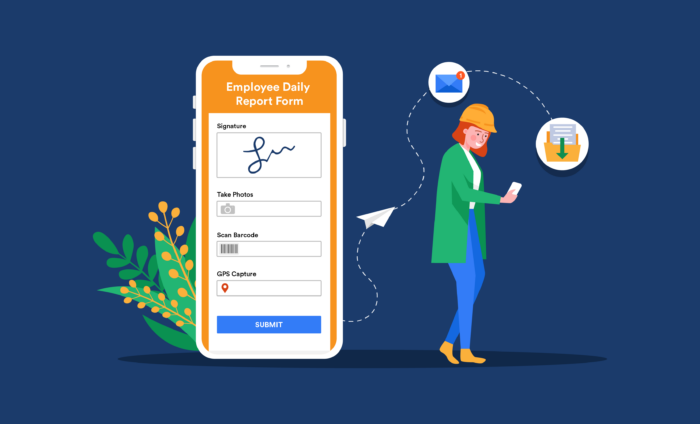




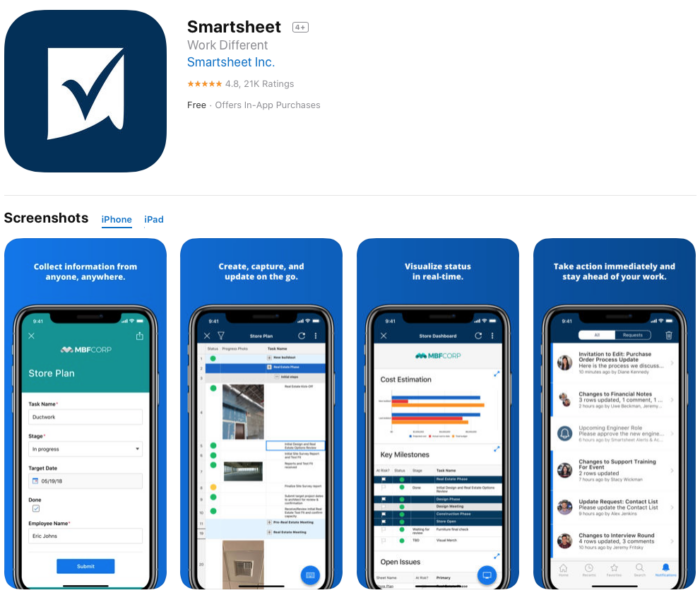


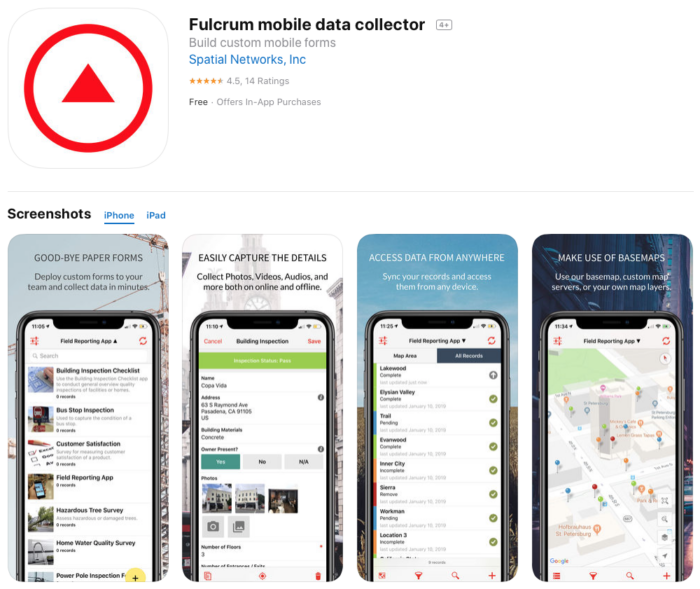
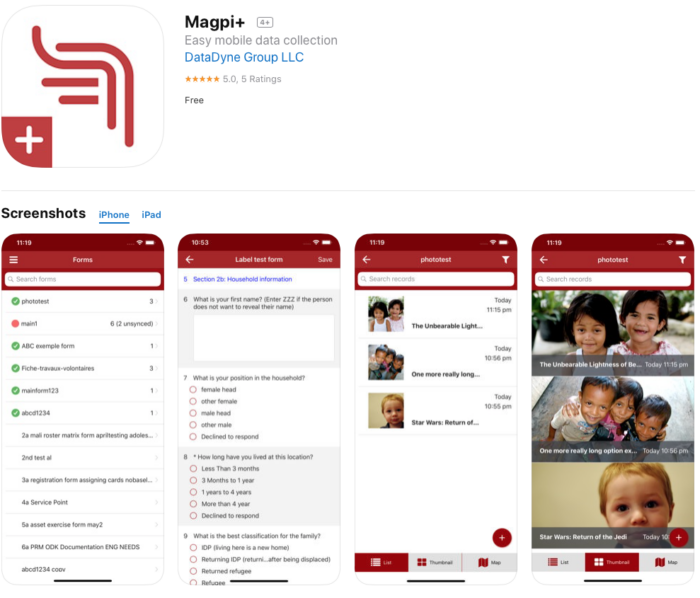





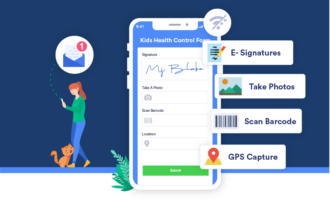

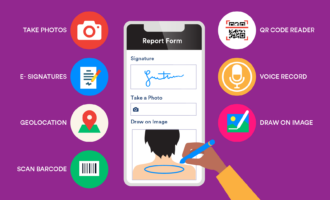



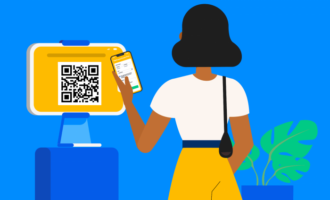

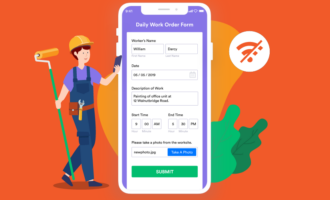
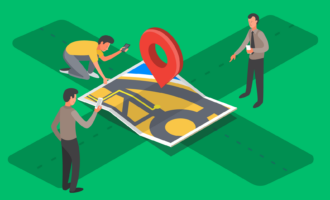

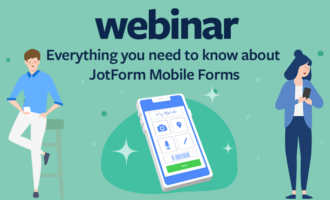
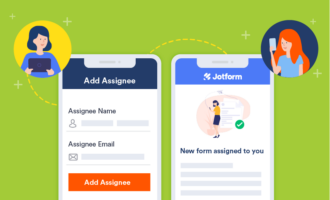

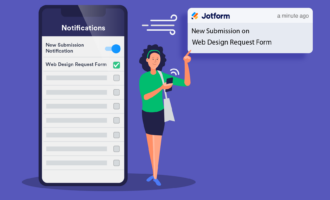
Send Comment:
3 Comments:
More than a year ago
Wants to collect database from people
More than a year ago
Hi
Thanks for the article. Just thought I should mention NestForms. The NestForms.com platform is a mobile survey app as opposed to an online form builder. Forms are easily created by a central administrator and shared to responders who are working on the ground. Different components such as single, drop down and multiple answer menus are simply dragged and dropped into your form. You can add images, include GPS coordinates, QR and barcode scanning and much more. They provide great online and email support.
More than a year ago
As an individual who has been working in field service management industry for 25 years now, I cannot even come close to explain how mobile forms made our jobs much easier.
I am working in a large cable supplier and we are always on the move, going to shops and homes to install phone lines. Living in Los Angeles the traffic was killing me to go to the place that required cable services and come back to our headquarters after every visit to report. If there was an oversight, I had to drive all the way back to the customer's house once more. It was a back and forth nightmare.
3 months ago, we have tried out Jotform mobile forms and thanks to that now I can report back immediately after a job is done, even can take photos of the cable work. Now instead of reporting back to our main office after every customer, I can just finish my daily round of customers and happily go back to the main office just once at the end of the day to check out.
I had my doubts about the mobile app at first, thinking that it can never fully replace our current system. But, boy, that app proved me wrong. I can even collect signatures through the iPad!
Thanks to the team who is behind this great app!